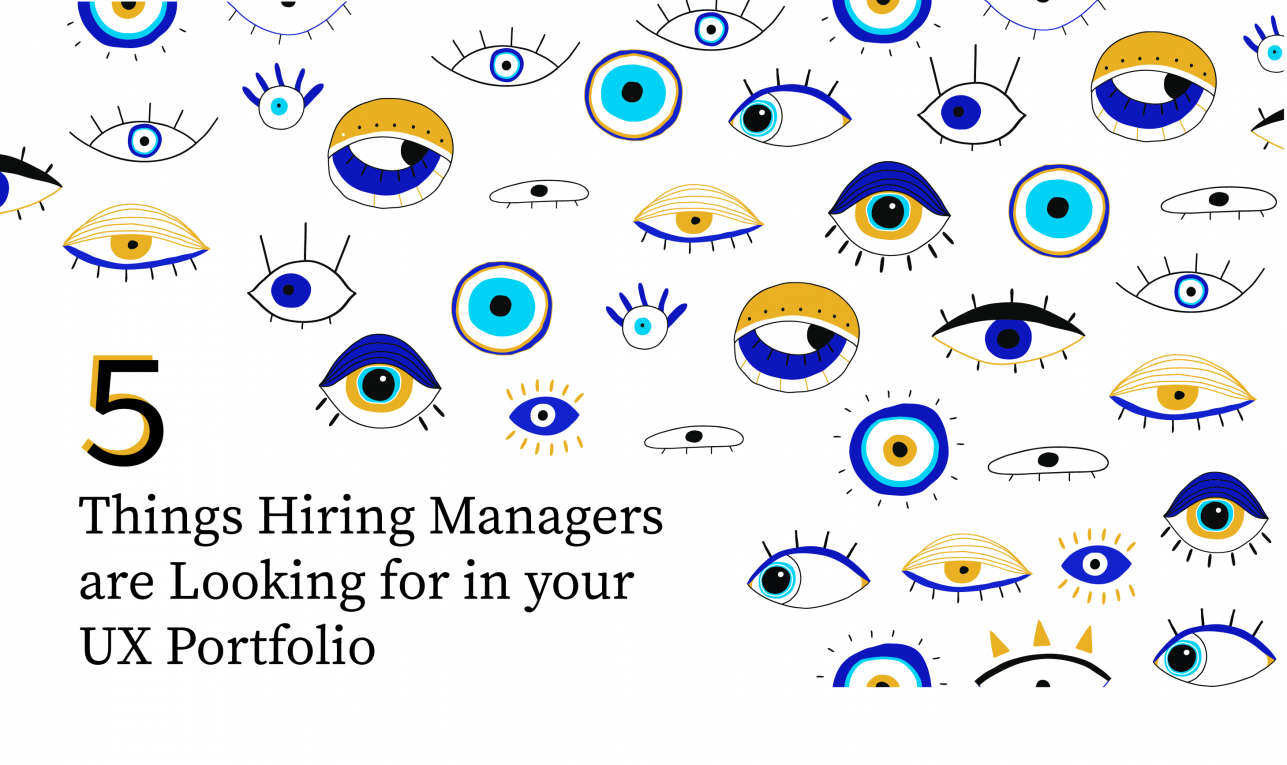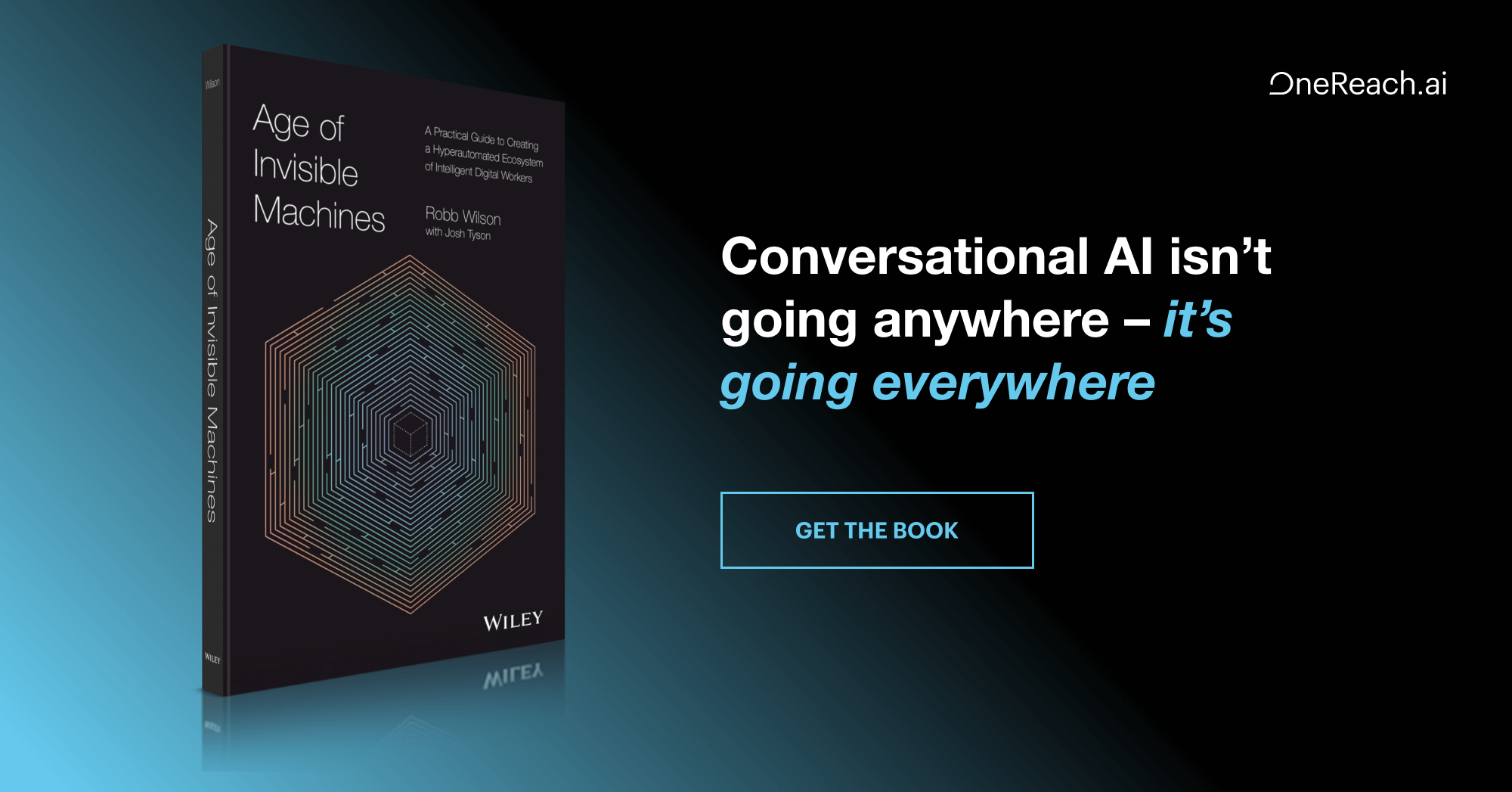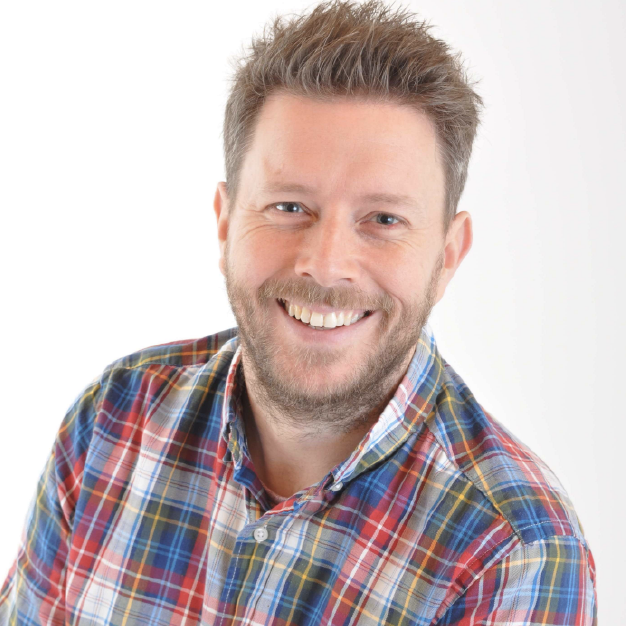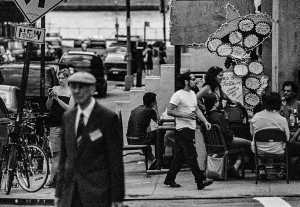Getting noticed by a potential employer is the first hurdle to overcome when you’re looking for your next role in User Experience Design, and one of the key ingredients is your portfolio. Whether you have several previous real-world projects to draw upon or are basing your portfolio on existing products or design challenges, you need to convey your ability in a way that will not only grab the attention of those who will decide on whether they want to interview you but will tell them about how you do your work.
Based on my own experience from multiple interviews and feedback from numerous UX leaders, here are the 5 things you need to have in your portfolio to stand a chance of success.
1. Showcase your ability to tell a story about a project
There is a lot made about storytelling in design, and for good reason. Writing a case study for your portfolio is a fantastic way to show your ability to tell a story around the project you worked on, which puts that always wanted soft skill of communication on display.
By effectively telling a story around your project, you are showcasing your ability to communicate with people in your team, with the owner of the product, and with stakeholders. It is displaying your ability to be able to interact with people effectively, in a collaborative environment, with multiple people in varying roles.
It is extremely valuable for your future employer to know that you can convince stakeholders on why you made particular decisions, and team members on how you decide upon and implement those decisions.
2. Present the impact of your work
Leading on from your ability to communicate by telling a story about a project, you must also be able to show the value that resulted from that work.
This is not only to convey how the work you have previously done was of significance but again shows that you can communicate with business stakeholders in their language, by using metrics and analytics to show a return on investment. The outcomes of your work, when viewed from a business perspective, will give weight to your ability to deliver considered and effective design solutions to the problems the business is looking to solve.
Write about the context of your work from the perspective of the business. What was it trying to help achieve, and did the project fulfil that role and deliver a valuable solution?
If you don’t have real-world outcomes for your project, maybe because it wasn’t completed or didn’t go live, or it was for a hypothetical project, you can still use other measurements to justify the design decisions you made, and you can hypothesise about the possible impact based on comparable statistics from competitor products or generalised research findings. Having something to convey the impact your work would have, even if hypothesised, is better than having nothing as an outcome.
3. Be clear about your role
In almost all cases in a professional design environment, you will work as part of a team. Even if you are a UX team of one, you will still work closely with other disciplines in your role. Being specific about the things you worked on will show your input into the eventual outcome of a project, and including what the other members of your team were responsible for, and — much more importantly — how you worked with them will showcase your ability to work as a part of a collaborative effort.
Be sure to give praise to others in your team when they helped set your work in a different direction, acknowledge them for the support they gave you in the work you have done, and do not claim ownership of things that were not a direct result of your work alone.
Remember that you will be joining a team of people when starting a new role, and your ability to integrate and collaborate will be seen as a benefit.
4. Explain your decision-making process
This will likely be intertwined with your storytelling, showing the impact of your work, but will contain something else than the aforementioned lack; your ability to make decisions and the reasoning behind them. Your design decisions whilst working on a project will be based on a combination of your findings from research, analytical data of the existing product, and your knowledge and experience.
One of the great things about being a designer is that it’s part of your job to be wrong. Using an iterative approach, we have to uncover the best possible paths to take from the knowledge we have, and to then test whether that knowledge — and our decisions based upon it — is the right thing to continue doing.
Sharing the reason why you didn’t go down a particular route during your design process is just as valuable as selecting the better path, or perhaps even more so. By spending time investigating whether to take a step along a specific path and finding out it is the wrong way to go is not a waste of time, but a saving of countless hours of design and development for something that we know will likely have failed before it came to be released.
You are again showcasing your ability to not only do the job you will be hired to do, but know the value of your work in the long term, and how that can be of benefit to your future employers.
5. Show your personality and love for the work
If you care about the work you do, you need to be sure that this comes through in the way you write.
I have previously found difficulty in conveying my personality, principles, and the other things that build up a picture of who I am as a designer. What I have come to realise is that I need to write in the same way that I talk. I can be passionate, become annoyed and vocal about decisions that don’t make sense to me, be understanding when I know all of the facts behind those decisions, and can make compromises and pragmatic decisions when the need arises.
Translating that into written form for it to be (semi-)permanent when uploaded to your website or sent to a possible employer can be quite daunting, but it is the only way to authentically reflect your personality, what you would bring to a collaborative environment, and to showcase your values.
When you are writing up a case study for your portfolio, be sure to write it in the manner that you would speak to people, whether they would be your team, project stakeholders, or your potential employer. Your personality will shine through.
One thing to always remember is that everyone is human, whether a Senior or Lead UX Designer, a Product Owner, Department Head, or CEO. Yes, they have the power to hire you, but you must also recognise what you have in common, and how the work that you do can be of benefit to each of those people in that potentially intimidating list.
BONUS! Don’t show everything you have ever made
If you have years upon years of experience, and numerous projects on which you can present a case study, I want to stop you right there. Showing a veritable smorgasbord of different projects to a potential employer is simply a barrage of information that they have to struggle through to find valuable information about what you can do for them as a designer.
If you’ve been around long enough to amass such a repertoire of work, then you need to curate your portfolio in such a way that it advertises the kind of work you want to be doing, and that aligns with the type of work that you will be involved in with the organisation you are looking to join.
All you need are 2 or 3 well-written case studies that detail an end-to-end process, that incorporates the 5 points in this article, and you have everything you need to be able to convince someone that you are the right designer for the job.
Originally published at https://westleyknight.com on August 18, 2020.








